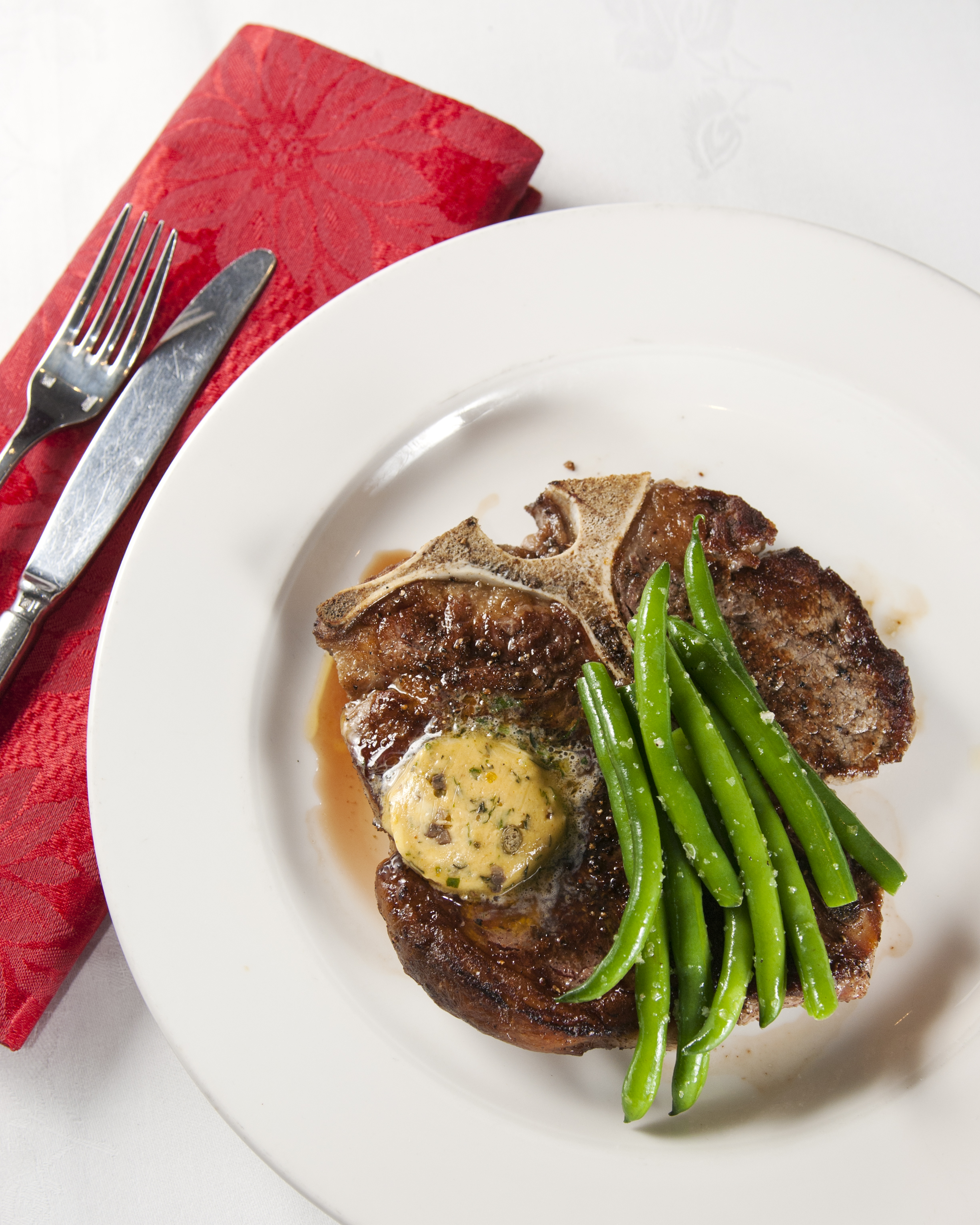Compound butters are probably one of the first things we learn at trade school. Simply put, it is butter with flavourings. It’s used much like a sauce for many dishes like on roasted vegetables or to toss through freshly blanched beans, on roasted fish, cut into small discs and stuffed in between the skin and flesh of chickens ready for roasting for moisture and flavour and traditionally,it is used on grilled meats, mainly as a sauce or in corporation with a jus to monte the jus with more flavour.
There are then obviously heaps of different types of compound butters. For example, truffle butter. Grated truffle folded into whipped butter with some chopped herbs, usually used to go in between the skin and flesh of poultry such as a poussin. Roasted beetroot, pureed then folded into butter for roasted vegetables and the list goes on. Other types include anchovy butter, red wine butter, port and muscatel butter, ground almond butter and so on. The list is virtually endless, it all depends on what dish you want to use it in.
So this is the time to be a little creative. Use your initiative, for example, herbs would go great with blanched vegetables so use herb butter.
Cafe de Paris butter was not invented in cafe in Paris as the name would suggest but rather by a chef named Freddy Dumont in 1941 in a restaurant called “Cafe de Paris” – funnily enough! It was used predominantly on grilled sirloins and made this restaurant in it’s time very popular. It still operates today and still makes the famed butter which ships to other restaurants all over the world trade marked as being the original version. Today, there are many recipes of this butter out there but I have been using this very same recipe since I started cooking a long time ago and I’m still convinced that if made properly, it’s still the best!

Photo by Jun Pang
Café de Paris Butter
1kg Butter
1 cup Tomato Ketchup
4 tsp Dijon Mustard
2 tsp Capers
½ Cup Parsley Finely chopped
½ Cup Chives Finely Chopped
¼ Cup Marjoram Finely Chopped
¼ Cup Dill Finely Chopped
¼ Cup Tarragon Finely Chopped
2 Cloves Garlic Finely Chopped
10 Anchovy Fillets Finely Chopped
2 Tblspn Brandy
1 Tblspn Worcestershire Sauce
½ Tspn Curry Powder
Pinch Cayenne
Juice of 1 Lemon
Juice of 2 Oranges and Zest
Method
- Place all the ingredients in a bowl except for the butter. Allow it to sit over night at room temperature
- Place the softened butter in a kitchen aid or a mixer with a paddle attachment
- Whip on high speeds until it starts to change colour sightly, lighter yellow colour
- Place the herb mix into the mixer and mix on slow speed
- Mix well then place into jars or roll it into logs by using kitchen paper then in foil, then use the foil to roll it in tight log
- Make small batches and you can freeze it so it can be more user friendly
Truffle – is a subterranean funghi (mushroom that grows under ground). Very pungent, unique aroma that is so strong it can flavour porous ingredients, for example if stored with arborio rice for a period of time you can make truffled risotto, it will take on the flavours of the truffle, same with eggs for truffled eggs. Highly priced in French, Spanish and Italian cuisine, truffles have hundreds of varieties with the most prized being the white truffle or Alba madonna found in the country side of Alba, Italy. Truffles are highly regarded in kitchens and can fetch hundreds of dollars per kilo
Poussin – is a young or juvenile chicken weighing in at 400-550gr, no older than 28 days old. In Australia, it is also known as spatchcock
Muscatel – is from the grapes called muscats. It is left on the vine to ripen until it resembles raisins. It is very intense in sweetness and has a beautiful pruney, sweet flavour. Used a lot as dried fruit condiment or on cheese plates
Monte – in cooking terms it suggests to mount, meaning to mount with butter for example. Monte au beurre means to mount with butter or finish with butter. Usually referring to jus mounted with butter to flavour extension, body and silky, shiny finish to a jus
 Photo by Jun Pang
Café de Paris Butter
1kg Butter
1 cup Tomato Ketchup
4 tsp Dijon Mustard
2 tsp Capers
½ Cup Parsley Finely chopped
½ Cup Chives Finely Chopped
¼ Cup Marjoram Finely Chopped
¼ Cup Dill Finely Chopped
¼ Cup Tarragon Finely Chopped
2 Cloves Garlic Finely Chopped
10 Anchovy Fillets Finely Chopped
2 Tblspn Brandy
1 Tblspn Worcestershire Sauce
½ Tspn Curry Powder
Pinch Cayenne
Juice of 1 Lemon
Juice of 2 Oranges and Zest
Method
Photo by Jun Pang
Café de Paris Butter
1kg Butter
1 cup Tomato Ketchup
4 tsp Dijon Mustard
2 tsp Capers
½ Cup Parsley Finely chopped
½ Cup Chives Finely Chopped
¼ Cup Marjoram Finely Chopped
¼ Cup Dill Finely Chopped
¼ Cup Tarragon Finely Chopped
2 Cloves Garlic Finely Chopped
10 Anchovy Fillets Finely Chopped
2 Tblspn Brandy
1 Tblspn Worcestershire Sauce
½ Tspn Curry Powder
Pinch Cayenne
Juice of 1 Lemon
Juice of 2 Oranges and Zest
Method